Underground development nearing initial high-grade mining
zone and work commences on surface processing plant
Kamoa-Kakula Project surpasses 14.5 million hours worked
without a lost-time injury
Upgrading work at the Mwadingusha hydropower plant
progressing well, providing Kamoa-Kakula with clean
hydro-electricity from the national grid
KOLWEZI, DEMOCRATIC REPUBLIC OF CONGO – Robert Friedland and Yufeng “Miles” Sun, Co-Chairmen of Ivanhoe Mines (TSX: IVN; OTCQX: IVPAF), announced today that excellent progress is being made in the construction of the Kakula Copper Mine – the stage one, six-million-tonne-per-annum (6 Mtpa) operation – on the tier-one Kamoa-Kakula Project in the Democratic Republic of Congo (DRC).
On April 25, 2019 Ivanhoe announced that China-based CITIC Metal agreed to invest an additional C$612 million (US$459 million) in Ivanhoe by way of a private placement at C$3.98 per share. Since that announcement, the pace of underground mine development has accelerated and the first access drives are approaching Kakula’s initial high-grade ore. In addition, Ivanhoe and its joint-venture partner Zijin Mining have commenced earthworks for the surface processing plant and have issued tenders for the long-lead mining and processing equipment. Initial copper concentrate production from the Kakula Mine currently is scheduled for the third quarter of 2021.
CITIC Metal’s US$459 million investment will be its second major financing in less than a year, bringing its total investment in Ivanhoe to approximately US$1 billion. The CITIC Metal investment is expected to close no later than September 7, 2019. On May 15, 2019, Zijin Mining exercised its anti-dilution rights, which will generate additional proceeds for Ivanhoe of C$67 million (US$50 million), to be received at the same time as the CITIC Metal funds.
The combined proceeds of more than C$679 million (US$509 million) from CITIC Metal and Zijin Mining positions Ivanhoe to fully finance its share of capital costs required to bring the Kakula Mine into commercial production. The initial, five-year, detailed mine design now has been finalized and production scheduling is in progress. The full, detailed mine design will be included in the independent definitive feasibility study that is expected to be published early next year.
“With the initial mine development of Kakula soon to be fully financed, we now are focused on rapidly advancing the construction of surface infrastructure and the processing plant, to match the accelerating pace of development of the underground mine workings and to transform Kakula into one of the world’s greatest copper mines. The shallow, thick, high-grade nature of the orebody will allow us to ramp up production quickly,” said Mr. Friedland.
“The significant progress to date has been the result of the collaborative efforts of many international and DRC-based stakeholders. Now that development is well underway and we have a clear line of sight to the first copper production, it is our goal to take as many top-tier international, institutional mining investors to the mine site so that they can see first-hand the scope and quality of development work being performed by the Kamoa-Kakula team, many of whom are from the communities surrounding the project.
“These investors also will get to see the drill core from the new Kamoa North Bonanza Zone – with multiple, thick intercepts that run greater than 15% copper – and gain an in-depth appreciation as to why we are so excited about the potential of this extraordinary discovery,” Mr. Friedland added.
Figure 1: Kamoa-Kakula mining licence, showing the Kakula Mine, the Kamoa North Area, the Kamoa Far North Area, the planned mine at Kansoko, and part of Ivanhoe’s 100%-owned Western Foreland exploration licences.
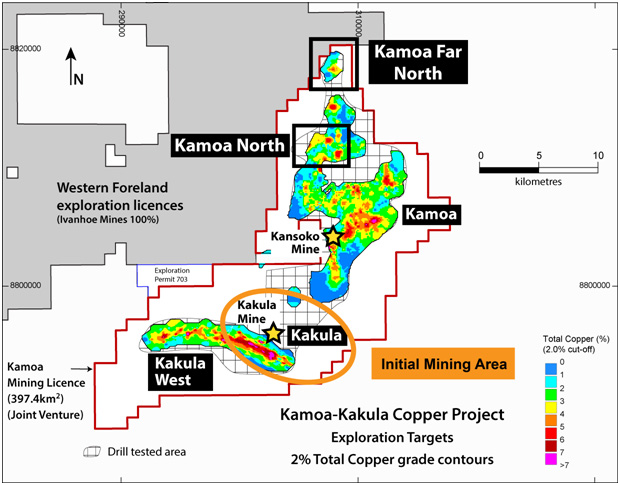
Underground development approaching Kakula’s initial high-grade mining zone
Approximately 2,500 employees and contractors now are working at the Kamoa-Kakula Project as Ivanhoe and its partners advance construction of the project’s initial mine at the Kakula Deposit. Congolese nationals comprise more than 90% of the project’s current workforce.
A total of 647 metres of underground development was completed last month, approximately 100 metres more than achieved in April. Lower-grade development ore is being stockpiled on surface near the site of the concentrator plant. This ore will be used for plant commissioning. Mine access drives 1 and 2 (interconnected, parallel tunnels that will provide access to ore zones) are approximately 200 metres from Kakula’s initial high-grade mining area, and these priority drives are expected to intersect the higher-grade ore in late July or early August this year.
Figure 2: The 13.3-kilometre-long Kakula Deposit. The initial production areas at Kakula will be in the pink areas on the eastern side (on the right) of the deposit that contain copper grades greater than 7% copper.

The underground development work at Kakula is being performed by mining crews operating large-capacity, semi-autonomous mining equipment, such as jumbo drilling rigs and 50-tonne trucks as shown in the pictures below.
Figures 3 and 4: Large-capacity, semi-autonomous mining equipment in operation underground at the Kakula Mine.
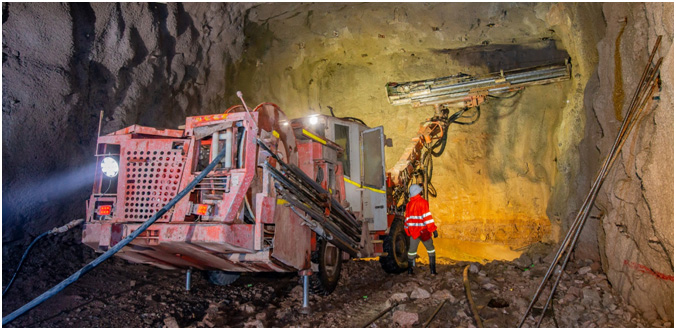
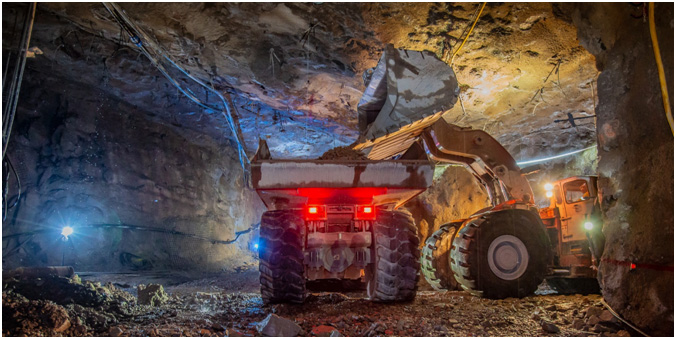
The Kakula mine access is via twin declines on the northern side (which have been completed) and a single decline on the south side of the deposit (under development). One of the northern declines will be the mine’s primary access way, while the other will be for the ore conveyor haulage system. The southern ventilation decline will serve as a secondary access and will facilitate the acceleration of critical, early mine development.
From the bottom of the northern and southern declines, a pair of perimeter drifts will be driven to the east and west extremities of the deposit and will serve as the primary accesses to the production areas. These drifts also will be used as the primary intake and exhaust ventilation circuits and will connect with the intake and exhaust ventilation shafts. Underground access to the first raise bore ventilation shaft has been reached. The pilot hole for the 177-metre raise bore has been completed, and reaming of the 5.5-metre diameter ventilation shaft is expected to be completed next month.
The primary ore handling system will include perimeter conveyor drifts and load-out points along the north side of the deposit. The perimeter conveyor drifts will terminate at the main conveyor decline. Connection drifts between the north and south perimeter drifts will provide access and ventilation to the planned mining areas. Approximately 99% of the deposit will be mined using the drift-and-fill method, which was chosen to maximize the overall extraction of Kakula ore.
Figures 5 and 6: Plan view of the underground development on the northern side of the Kakula ore body, with the pink shaded areas indicating development work completed and approximate positions of the working faces.
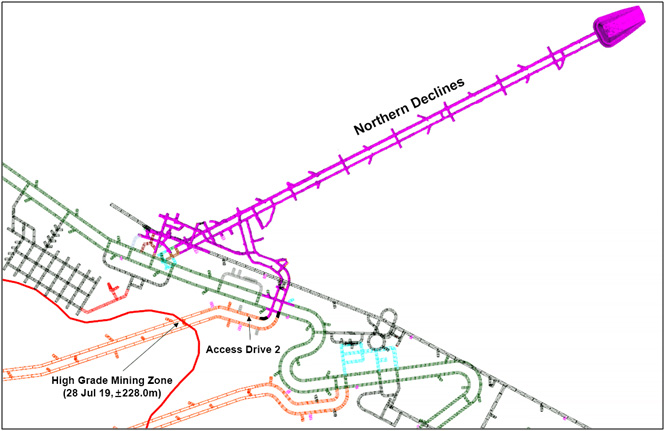
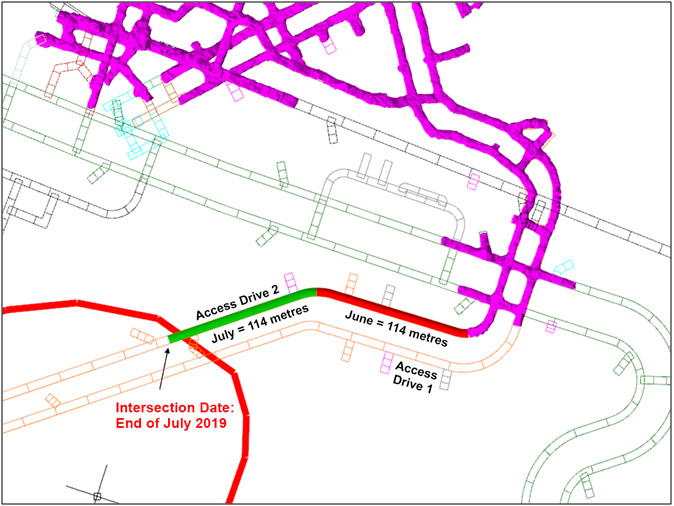
The initial, five-year production-area detailed mine design has been finalized and production scheduling is in progress. The full detailed mine design will be included in the definitive feasibility study that is in progress. The backfill plant design is in progress with the design criteria and plant flow diagrams. The tailings will flow through a series of cyclones at the backfill plant, and approximately 55% of the tailings will be sent back underground into the mined-out workings as paste backfill. The remaining 45% of the tailings will be pumped to a small tailings storage facility that is being designed by a team of leading international engineers to meet global best practices for safety.
The detailed design for the truck-tipping area, where underground ore will feed onto the conveyor system for transportation to surface, and the conveyor system for the main declines, has been completed and component manufacture is underway.
Three underground mining crews are working at Kakula. Once Ventilation Shaft 1 is completed and fans have been installed, an additional three crews will be mobilized to accelerate mine development. This is scheduled for October 2019.
Figure 7: First two high-capacity ventilation fans installed at Kakula’s northern declines.
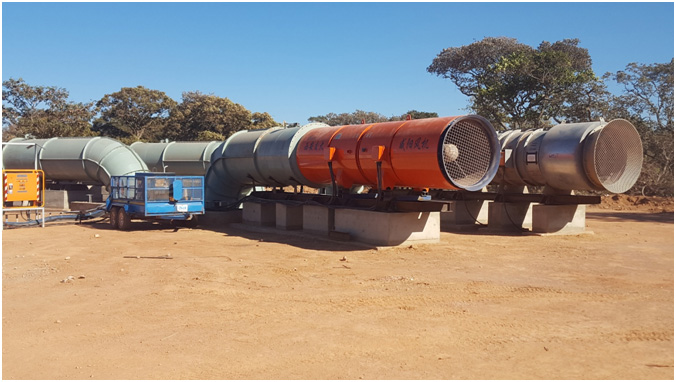
Figure 8: Kakula’s initial, five-year underground development plan, showing completed development (pink) and the initial production blocks.
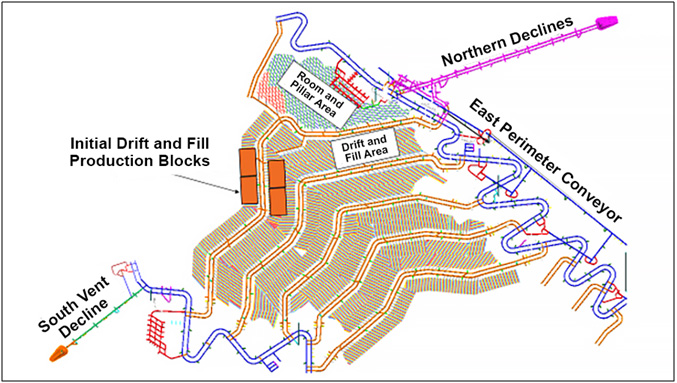
Figure 9: Projected copper grades in Kakula’s initial five-year mining plan, showing the initial drift-and-fill mining area with copper grades between 6% and 11%.
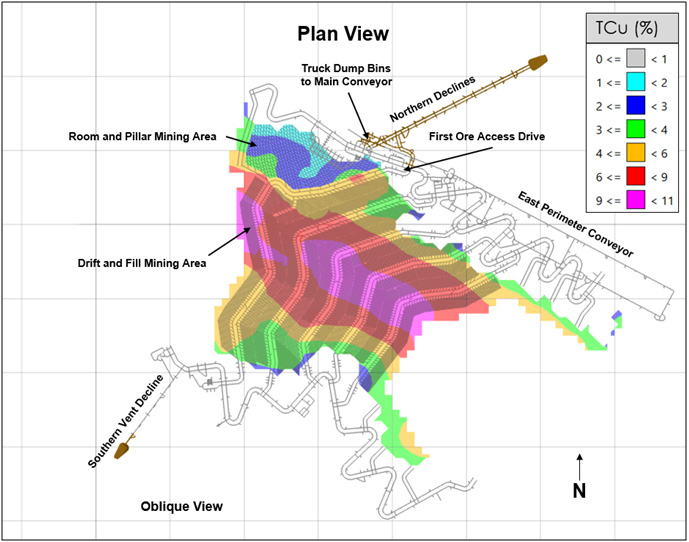
Development of an additional access and ventilation decline on the southern side of the Kakula orebody is progressing well and has advanced more than 200 metres. A surface piling rig machine has been mobilized to prepare for the raise bore civil construction for Ventilation Shaft 2.
Figure 10: Kakula’s southern ventilation decline layout, with the brown colour marking the current development face.

Figure 11: Kakula’s southern box cut and portal entrance to the decline.
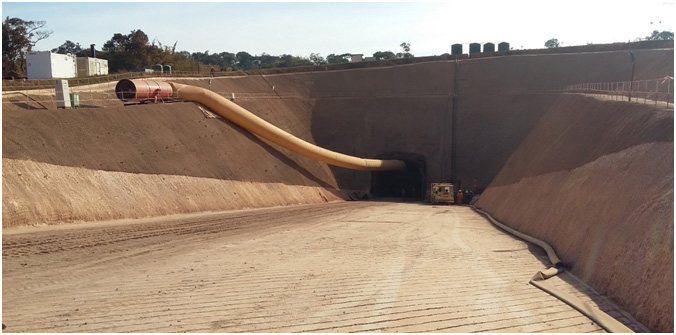
Figure 12: Newly constructed offices at Kakula’s southern decline.
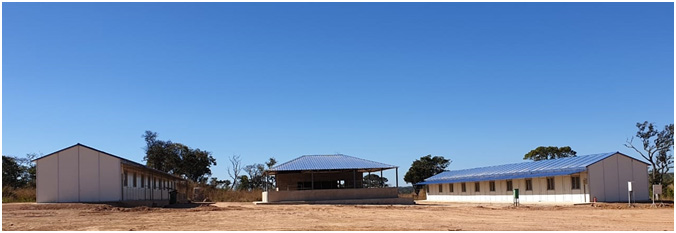
Figure 13: A raise boring machine in operation at Ventilation Shaft 1 (at right), next to the concrete foundations that are being constructed to support the large-capacity ventilation fans.
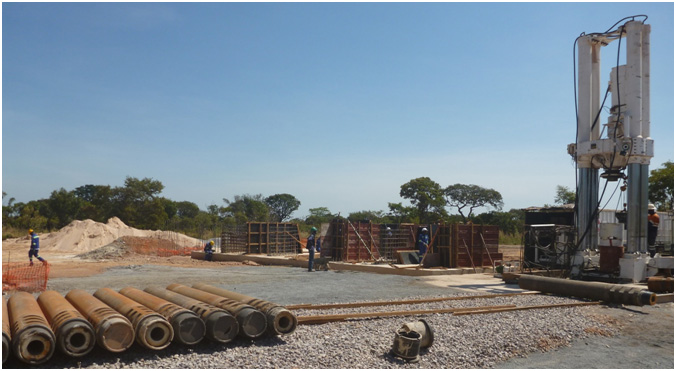
Figure 14: Drilling the pilot hole for Ventilation Shaft 2.
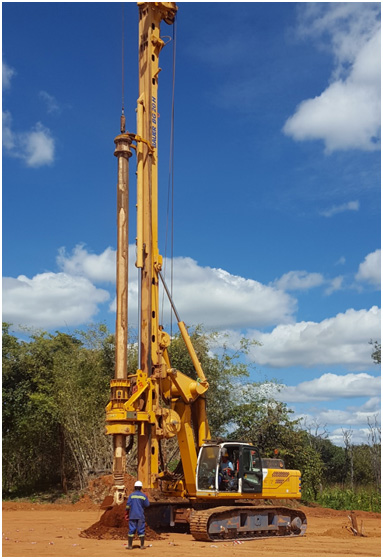
Detailed engineering work by DRA Global nearing completion; tenders for processing equipment issued; independent definitive feasibility study expected early next year
On February 6, 2019, Ivanhoe announced an independent pre-feasibility study (PFS) for the Kakula Mine. The stage one, 6 Mtpa operation, with estimated development capital of $1.1 billion, yields an after-tax NPV8% of $5.4 billion and an IRR of 47% over a 25-year mine life. The mine is expected to average 6.8% copper over the first five years, with mine-site cash costs of $0.43 per pound of copper. All figures are on a 100%-project basis unless otherwise stated. The technical report for the PFS – titled Kamoa-Kakula Integrated Development Plan 2019 – is available on the SEDAR website at www.sedar.com and on the Ivanhoe Mines website at www.ivanhoemines.com.
Since the issuance of the PFS, the detailed engineering work being undertaken by DRA Global has progressed very well and is expected to be completed in August. The contract includes the engineering and design associated with all underground mining infrastructure, the concentrator plant and all supporting surface infrastructure. This engineering work is running in parallel with an independent definitive feasibility study that is expected to be completed early next year. An agreed, detailed budget, and construction and implementation plan is being finalized with Ivanhoe’s joint-venture partner Zijin Mining. The project also will be further optimized and adjusted based on the development progress of the project and on the results of the definitive feasibility study.
On May 22, 2019, the project’s construction team commenced breaking ground for the surface processing plant, marking the start of the concentrator construction. The Kakula concentrator will be constructed in a phased approach with two 3 Mtpa modules, as the mining operations ramp up to a full ore-throughput rate of 6 Mtpa. Kakula is expected to produce a very-high-grade copper concentrate in excess of 55% copper, with extremely low arsenic levels.
The processing plant flow diagrams, process control descriptions, and processing equipment lists have been completed and piping and instrumentation diagrams are being finalized. Tenders for long-lead items such as cone crushers, ball mills, thickeners, high-pressure grinding rolls, flotation cells, regrind mills, concentrate filter and low entrainment flotation cells, have been issued to the market and bids have been received. The Kamoa-Kakula project team in conjunction with DRA is in the process of adjudicating the tenders. Orders are expected to be placed shortly.
In addition, the tender for the plant civil works has been issued. All bids have been received and are under adjudication. Tenders for smaller equipment for the processing plant such as agitators and samplers have been issued to the market.
Drilling continuing to expand the Kamoa North Bonanza Zone
Five rigs now are drilling at, and along strike of, the new Kamoa North Bonanza Zone to delineate the extent of the discovery and assess its potential to be fast-tracked to production to increase Kamoa-Kakula’s early copper grades. Assay results from 10 holes released last month drilled at the Kamoa North Bonanza Zone expanded the discovery’s strike length to at least 350 metres with intercepts as high as 18.48% copper over 13.6 metres.
Ivanhoe plans to release the next batch of assay results from drilling at the Kamoa North Bonanza Zone later this month or in July.
Kamoa-Kakula’s engineers are evaluating potential options to fast track the development of this new discovery. Given the shallow depth of the high-grade mineralization, access to the discovery is expected to be via a short decline. Any material mined at Kamoa North could be processed at a nearby, standalone plant, or hauled to the plant that will be constructed at Kakula.
The current implied strike length of the Kamoa North Bonanza Zone is 2.7 kilometres. However, the east-west-striking fault structure associated with the Kamoa North Bonanza Zone can be traced for up to 20 kilometres onto the adjacent Western Foreland exploration licences that are 100%-owned by Ivanhoe Mines.
Kamoa-Kakula surpasses 14.5 million hours worked without a lost-time injury
Earlier this month, the Kamoa-Kakula Project achieved a total of more than 14.5 million work hours free of lost-time injuries. It has been approximately seven years since the last lost-time injury occurred at the project. This outstanding achievement reflects the dedication to a safety-focused culture of the entire Kamoa-Kakula exploration and development teams.
Kamoa-Kakula investing in the development of host communities
As the Kamoa-Kakula Project advances, Ivanhoe and Zijin Mining also are investing in developing and upgrading the infrastructure of the small rural communities in the vicinity of the project, as well as in the skills of local stakeholders. The project places a priority on local employment, and more than 90% of its employees and contractors are Congolese nationals. A management training program is in place at the project to expand the number of local employees in management positions.
The project has partnered with the National Institute for Preparation of Businesses, a DRC government initiative providing skills training to assist individuals to apply for employment or launch their own small business. At Kamoa-Kakula, community members are being trained in auto-electrical skills, masonry and construction.
Figure 15: Worker-owners at a local brick-making cooperative, a Kamoa-Kakula-sponsored community initiative, recently celebrated the production of 100,000 bricks.
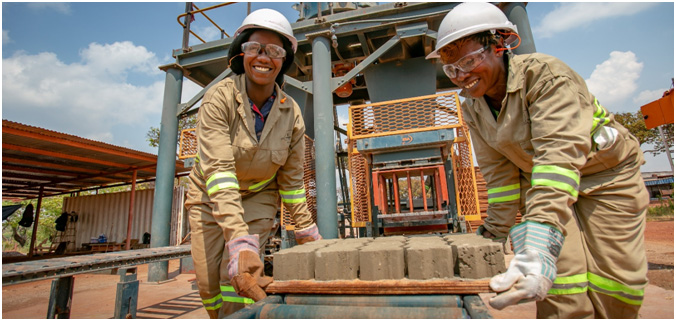
A significant portion of the project’s local socio-economic initiatives are geared toward food security, education and skills development as the project is situated in a rural area. The Livelihoods Program at Kamoa-Kakula has developed into a large-scale operation, with hundreds of beneficiaries growing maize and vegetables, and selling poultry and honey. Projects in the scoping phase include commercial fish ponds and pineapple and banana production. The Livelihoods Program has a demonstration garden where environmentally-friendly farming practices are tested before community members are trained on applying the practices in their own food gardens.
Earlier this month, Ivanhoe issued its second annual Sustainability Report, which provides an overview of the company’s sustainability programs and initiatives conducted in 2018. The report highlights the significant accomplishments achieved at its three mine development projects to date and sets forth the new goals that Ivanhoe has set for future sustainability initiatives.
The Ivanhoe Mines Sustainability Report 2018 is on the Ivanhoe website at https://www.ivanhoemines.com/site/assets/files/4354/ivanhoemines_sr18.pdf.
A video describing the report can be viewed here: https://player.vimeo.com/video/340647447?title=0&byline=0&portrait=0.
Figure 16: Paul Kabengele, Kamoa-Kakula Livelihoods Program Manager, in the program’s demonstration garden.
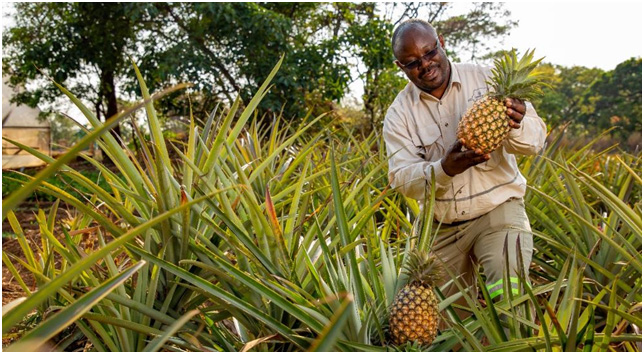
Kamoa-Kakula also invests heavily in local educational infrastructure and student support services. Approximately 2,800 children are benefiting from the improved school buildings, equipment and educational enrichment programs. In addition, Kamoa-Kakula has invested in community infrastructure, such as the provision of electricity, upgrading of communal buildings, supply of potable water, and improved sanitation and roads.
Kamoa-Kakula also funds an adult literacy program in partnership with Alfa Congo, a Kinshasa-based non-profit NGO dedicated to improving literacy levels among vulnerable social groups, as part of its community skills development program. The classes include a structured approach to basic functional literacy and numeracy.
Figure 17: Students at a new school near the Kamoa-Kakula Project using new equipment during a science lesson.

Upgrading work at the Mwadingusha hydropower plant progressing well, providing Kamoa-Kakula with clean hydro-electricity from the national grid
Construction activities at the Mwadingusha hydropower station are progressing well and Ivanhoe expects that the full upgrading and modernization of the hydropower plant and its six generators to be completed in late 2020. This upgrading work is pursuant to an agreement with the DRC’s state-owned power company, La Société Nationale d’Electricité (SNEL), and is in exchange for a guaranteed 100 megawatts of electricity – more than enough power for the Kakula Mine. The Kamoa-Kakula Project has been receiving hydroelectric-generated power from the national grid since late 2016.
This installation of modern power generating equipment at Mwadingusha is an important step in helping to secure long-term, sustainable and clean electricity for the Congolese people and for the development of the Kakula Mine.
The upgrading work at Mwadingusha is being conducted by engineering firm Stucky of Lausanne, Switzerland, under the direction of Ivanhoe and Zijin Mining, in conjunction with SNEL.
Work is underway on a 220-kilovolt electrical substation at the Kakula Mine that will allow the mine and processing plant to be fully powered from the national power grid. Two new Sumec generators also have been installed at Kakula to provide power to the mine in the event of any power interruptions in the national grid.
Mr. Friedland said a long-term, sustainable supply of clean electricity is essential to Ivanhoe’s vision to develop Kamoa-Kakula in an environmentally and socially responsible manner.
Figure 18: Upgraded Mwadingusha hydropower dam.
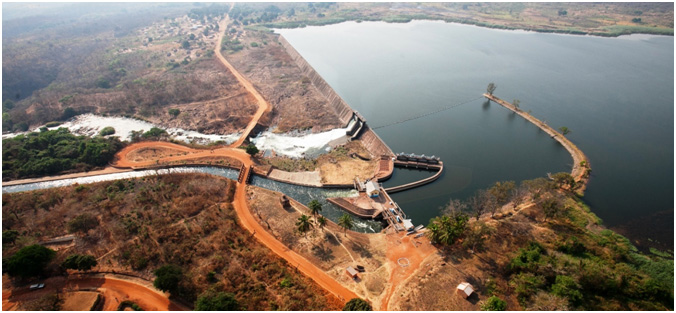
About the Kamoa-Kakula Project
The Kamoa-Kakula Project is approximately 25 kilometres west of the mining centre of Kolwezi in the DRC. It is a joint venture between Ivanhoe Mines (39.6%), Zijin Mining Group (39.6%), Crystal River Global Limited (0.8%) and the DRC government (20%). Ivanhoe Mines and Zijin Mining are co-funding development of the Kamoa-Kakula Copper Project.
Based on existing mineral resources, Kamoa-Kakula has been independently ranked as the world’s fourth-largest copper deposit and Kamoa-Kakula’s copper grades are the highest, by a wide margin, of the world’s top 10 copper deposits.
Kamoa-Kakula is unique as it combines ultra-high copper grades in thick, shallow and relatively flat-lying deposits ─ allowing for large-scale, highly-productive, mechanized underground mining operations. Kakula, the first of multiple planned mines expected to be placed into production at Kamoa-Kakula, is projected to have an average grade of 6.8% copper over the initial five years of operations, and 6.4% copper over the first 10 years − grades that are orders of magnitude higher than the majority of the world’s other major copper mines.
Qualified Person and Quality Control and Assurance
Scientific and technical information in this news release has been reviewed and approved by Stephen Torr, P.Geo., Ivanhoe Mines’ Vice President, Project Geology and Evaluation, a Qualified Person under the terms of National Instrument 43-101. Mr. Torr is not independent of Ivanhoe Mines. Mr. Torr has verified the technical data disclosed in this news release.
Ivanhoe Mines maintains a comprehensive chain of custody and quality assurance and quality control (QA/QC) program on assays from its Kamoa-Kakula Project. Half-sawn core is processed at the Kamoa-Kakula on-site preparation laboratory and prepared samples then are shipped by secure courier to Bureau Veritas Minerals (BVM) Laboratories in Australia, an ISO17025-accredited facility. Copper assays are determined at BVM by mixed-acid digestion with ICP finish. Industry-standard certified reference materials and blanks are inserted into the sample stream prior to dispatch to BVM. For detailed information about assay methods and data verification measures used to support the scientific and technical information, please refer to the March 2019 technical report titled “Kamoa-Kakula 2019 Integrated Development Plan”, on the Ivanhoe Mines SEDAR profile at www.sedar.com and available at www.ivanhoemines.com.
About Ivanhoe Mines
Ivanhoe Mines is a Canadian mining company focused on advancing its three principal projects in Southern Africa: the development of new mines at the Kamoa-Kakula copper discovery in the Democratic Republic of Congo (DRC) and the Platreef palladium-platinum-nickel-copper-gold discovery in South Africa; and the extensive redevelopment and upgrading of the historic Kipushi zinc-copper-germanium-silver mine, also in the DRC. The company also is exploring for new copper discoveries on its wholly-owned Western Foreland exploration licences, adjacent to the Kamoa-Kakula mining licence.
Information contacts
Investors: Bill Trenaman +1.604.331.9834
Media: Kimberly Lim +1.778.996.8510
Cautionary statement on forward-looking information
Certain statements in this release constitute “forward-looking statements” or “forward-looking information” within the meaning of applicable securities laws, including without limitation, (1) statements regarding the full, detailed Kakula Mine design will be in the independent definitive feasibility study that is expected to be published early next year; (2) statements regarding the shallow, thick, high-grade nature of the orebody will allow us to ramp up production quickly; (3) statements regarding mine access drives 1 and 2 are expected to intersect the higher-grade ore in late July or early August this year; (4) statements regarding reaming of the 5.5-metre diameter ventilation shaft is expected to be completed next month; (5) statements regarding an additional three crews will be mobilized to accelerate mine development scheduled for October; (6) statements regarding the pre-feasibility study for the Kakula Mine, including the estimated development capital of $1.1 billion, the after-tax NPV8% of $5.4 billion and an IRR of 47% over a 25-year mine life, and that the mine is expected to average 6.8% copper over the first five years, with mine-site cash costs of $0.43 per pound of copper; (7) statements regarding the detailed engineering work being undertaken by DRA Global is expected to be completed in August; (8) statements regarding orders for long-lead items for the mine and processing plant are expected to be placed shortly; (9 statements regarding plans to release the next batch of assay results from drilling at Kamoa North Bonanza Zone later this month or in July; (10) statements regarding the expectation that the full upgrading and modernization of the Mwadingusha hydropower plant and its six generators to be completed in late 2020.
Such statements involve known and unknown risks, uncertainties and other factors which may cause the actual results, performance or achievements of the company, or industry results, to be materially different from any future results, performance or achievements expressed or implied by such forward-looking statements or information. Such statements can be identified by the use of words such as “may”, “would”, “could”, “will”, “intend”, “expect”, “believe”, “plan”, “anticipate”, “estimate”, “scheduled”, “forecast”, “predict” and other similar terminology, or state that certain actions, events or results “may”, “could”, “would”, “might” or “will” be taken, occur or be achieved. These statements reflect the company’s current expectations regarding future events, performance and results and speak only as of the date of this release.
All such forward-looking information and statements are based on certain assumptions and analyses made by Ivanhoe Mines’ management in light of their experience and perception of historical trends, current conditions and expected future developments, as well as other factors management believe are appropriate in the circumstances. These statements, however, are subject to a variety of risks and uncertainties and other factors that could cause actual events or results to differ materially from those projected in the forward-looking information or statements including, but not limited to, unexpected changes in laws, rules or regulations (including retroactive application), the failure of contractual agreements with the State to be honoured in whole or in part, or in the enforcement or application of laws, rules and regulations by applicable authorities; the failure of parties to contracts to perform as agreed; social or labour unrest; changes in commodity prices, including the price of copper; unexpected failure or inadequacy of infrastructure, or delays in the development of infrastructure, the failure of exploration programs or other studies to deliver anticipated results or results that would justify and support continued studies, development or operations, and the results of economic studies and evaluations. Other important factors that could cause actual results to differ from these forward-looking statements also include those described under the heading “Risk Factors” in the company’s most recently filed MD&A as well as in the most recent Annual Information Form filed by Ivanhoe Mines. Readers are cautioned not to place undue reliance on forward-looking information or statements. The factors and assumptions used to develop the forward-looking information and statements, and the risks that could cause the actual results to differ materially are set forth in the “Risk Factors” section and elsewhere in the company’s most recent Management’s Discussion and Analysis report and Annual Information Form, available at www.sedar.com.
This news release also may contain references to estimates of Mineral Resources. The estimation of Mineral
Resources is inherently uncertain and involves subjective judgments about many relevant factors. Mineral
Resources that are not Mineral Reserves do not have demonstrated economic viability. The accuracy of any such estimates is a function of the quantity and quality of available data, and of the assumptions made and judgments used in engineering and geological interpretation, which may prove to be unreliable and depend, to a certain extent, upon the analysis of drilling results and statistical inferences that may ultimately prove to be inaccurate.
Mineral Resource estimates may have to be re-estimated based on, among other things: (i) fluctuations in copper prices or other mineral prices; (ii) results of drilling; (iii) results of metallurgical testing and other studies; (iv) changes to proposed mining operations, including dilution; (v) the evaluation of mine plans subsequent to the date of any estimates; (vi) the possible failure to receive required permits, approvals and licences, or changes to any such permits, approvals or licences; and (v) changes in laws, rules or regulations, including changes to tax, VAT, and royalty rates whether to be applied prospectively or retroactively.
Although the forward-looking statements contained in this news release are based upon what management of the company believes are reasonable assumptions, the company cannot assure investors that actual results will be consistent with these forward-looking statements. These forward-looking statements are made as of the date of this news release and are expressly qualified in their entirety by this cautionary statement. Subject to applicable securities laws, the company does not assume any obligation to update or revise the forward-looking statements contained herein to reflect events or circumstances occurring after the date of this news release.
Ivanhoe updates Kakula Copper Mine construction progress (FRENCH)
Ivanhoe updates Kakula Copper Mine construction progress (JAPANESE)


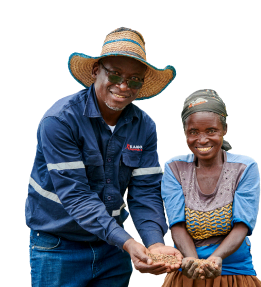
 English
English Français
Français 日本語
日本語 中文
中文